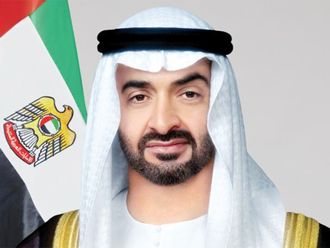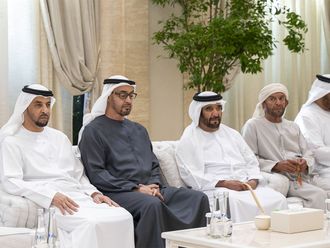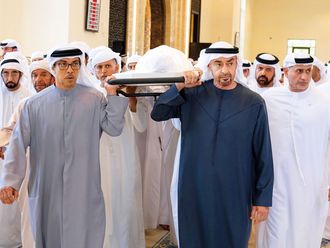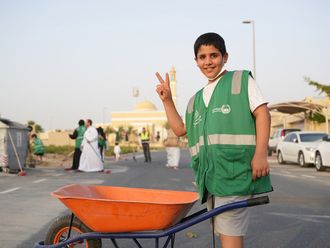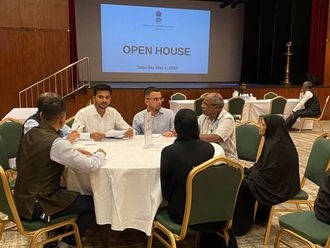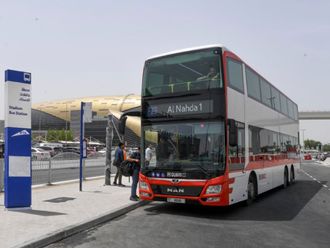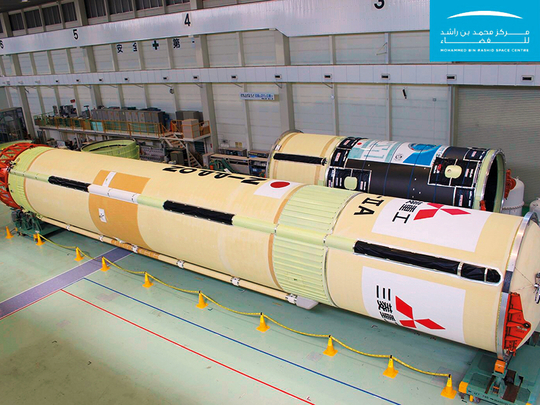
Dubai: It’s all-systems-go for the launch of the UAE-built KhalifaSat in Japan on (Oct 29) and the first image it will take will be a big surprise for everyone, an official said five days ahead of the launch.
KhalifaSat, the first satellite built on UAE soil by Emirati engineers, has passed the necessary functional tests and has been integrated into the launch vehicle, an HII-A rocket, in time for its launch into orbit on Monday.
Amer Al Sayegh, KhalifaSat project manager at the Mohammad Bin Rashid Space Centre (MBRSC), said engineers from the space centre are pulling out all the stops in Dubai and Japan to ensure a successful launch.
“At the moment, we’ve finished the integration of the satellite to the launch vehicle and the team is there to daily monitor the satellite telemetry, making sure nothing is going wrong with it from the day of integration to the day of the launch. The team will continue to do that even on the launch day itself,” Al Sayegh told Gulf News.
“We did our final functional test around two weeks ago and that is to verify that all the systems in the satellite are ready for launch and are performing as expected. That was done before we integrated the satellite.”
UAE time is when the rocket carrying KhalifaSat will be launched into space
Once the rocket is launched into space at 8.08AM, the flight time will be only around 15 to 20 minutes. It will take around two hours to confirm if the satellite successfully separated from the launch vehicle and to establish contact in either of two ground stations — at MBRSC in Dubai and in another facility in Norway.
Once in orbit, the KhalifaSat will travel south to Australia, taking a full revolution around the earth. The earth observation satellite moves in a sun-synchronous motion, meaning it travels from pole to pole to take images as the earth rotates.
The first photo that the KhalifaSat will take, however, remains a secret.
“We’d like to keep the first photo as a surprise. We usually select the best place for the first photo. But I assure you it’s a unique place,” Al Sayegh said, adding the big reveal will be made next week.
This “unique place” will be immortalised in a photo with a sub-metre resolution of 70cm ground sample distance (GSD). This means, each pixel of the image represents 70cm of the ground being captured, giving users the ability to recognise clear details of the subject being photographed from 613km above the earth.
Al Sayegh said MBRSC teams this week are rehearsing what will happen on the launch day and the days after to prepare for all scenarios.
What will happen during the launch at the Tanegashima Space Centre in Japan?
■ Four teams have been given specific assignments to ensure the successful launch.
■ A team of two engineers will be at the Yoshinobu Block House, which they fondly call as the bunker, located 500 metres away from the launch pad but 12 metres below underground. The duo, along with their Japanese counterparts, will be locked in the bunker 12 hours before the launch to make sure everything is properly working until the launch.
■ Another team of two engineers will be at the Takesaki Range Control Centre with other Japanese engineers to monitor the actual launch vehicle during refuelling, during the launch event, and even after the launch until the separation.
■ The third team is composed of the top officials of MBRSC and other engineers who will be at the Takesaki Observation Stand, 3km away from the launch pad, to watch the launch.
■ At the same time, a team in the UAE will be in charge of the ground station to await contact from the satellite and process images beamed back to earth.



